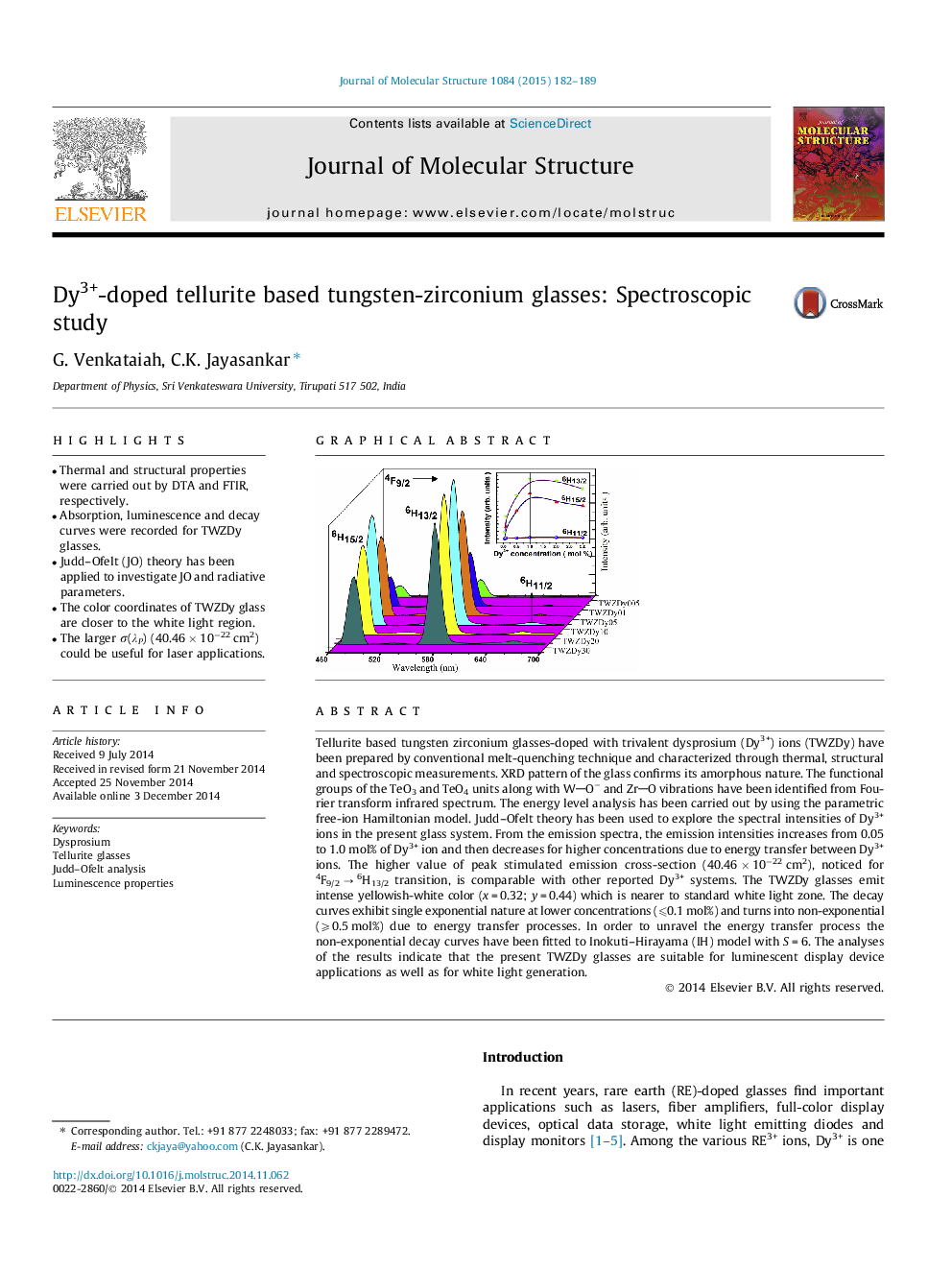| کد مقاله | کد نشریه | سال انتشار | مقاله انگلیسی | نسخه تمام متن |
|---|---|---|---|---|
| 1405394 | 1501733 | 2015 | 8 صفحه PDF | دانلود رایگان |

• Thermal and structural properties were carried out by DTA and FTIR, respectively.
• Absorption, luminescence and decay curves were recorded for TWZDy glasses.
• Judd–Ofelt (JO) theory has been applied to investigate JO and radiative parameters.
• The color coordinates of TWZDy glass are closer to the white light region.
• The larger σ(λP) (40.46 × 10−22 cm2) could be useful for laser applications.
Tellurite based tungsten zirconium glasses-doped with trivalent dysprosium (Dy3+) ions (TWZDy) have been prepared by conventional melt-quenching technique and characterized through thermal, structural and spectroscopic measurements. XRD pattern of the glass confirms its amorphous nature. The functional groups of the TeO3 and TeO4 units along with WO− and ZrO vibrations have been identified from Fourier transform infrared spectrum. The energy level analysis has been carried out by using the parametric free-ion Hamiltonian model. Judd–Ofelt theory has been used to explore the spectral intensities of Dy3+ ions in the present glass system. From the emission spectra, the emission intensities increases from 0.05 to 1.0 mol% of Dy3+ ion and then decreases for higher concentrations due to energy transfer between Dy3+ ions. The higher value of peak stimulated emission cross-section (40.46 × 10−22 cm2), noticed for 4F9/2 → 6H13/2 transition, is comparable with other reported Dy3+ systems. The TWZDy glasses emit intense yellowish-white color (x = 0.32; y = 0.44) which is nearer to standard white light zone. The decay curves exhibit single exponential nature at lower concentrations (⩽0.1 mol%) and turns into non-exponential (⩾0.5 mol%) due to energy transfer processes. In order to unravel the energy transfer process the non-exponential decay curves have been fitted to Inokuti–Hirayama (IH) model with S = 6. The analyses of the results indicate that the present TWZDy glasses are suitable for luminescent display device applications as well as for white light generation.
Figure optionsDownload as PowerPoint slide
Journal: Journal of Molecular Structure - Volume 1084, 15 March 2015, Pages 182–189